
Catching Up

Part of what makes working in a public garden so appealing is the variety of tasks that exist from day to day. At a place like Brookgreen Gardens, where our motto is literally “Ever Changing. Simply Amazing.”, you know we’re always up to something new! Throughout my time writing blogs, I, and some of our interns, have had the pleasure of sharing some of these garden changes. But it occurred to me that while we have shown you a lot of projects and plantings throughout the years, we haven’t come back to revisit where they are today. Maybe it's my latent love of reality TV that brought this on, but I figured a sort of “reunion episode” was in order, or perhaps more accurately a “where are they now”.
Put on some comfortable walking shoes everyone, because we’re about to take a stroll down memory lane. We’ll look back on some past projects and see what our plans were and how things are shaping up today. Now, unlike a reality show reunion episode, we won’t be raising our voices, and all furniture will remain safely and securely on the ground (hey, don’t tell me I’m the only one whose idea of a reality show reunion involves things getting a bit… heated.). That being said, let’s see how things have turned out!
Conifer Expansion Project
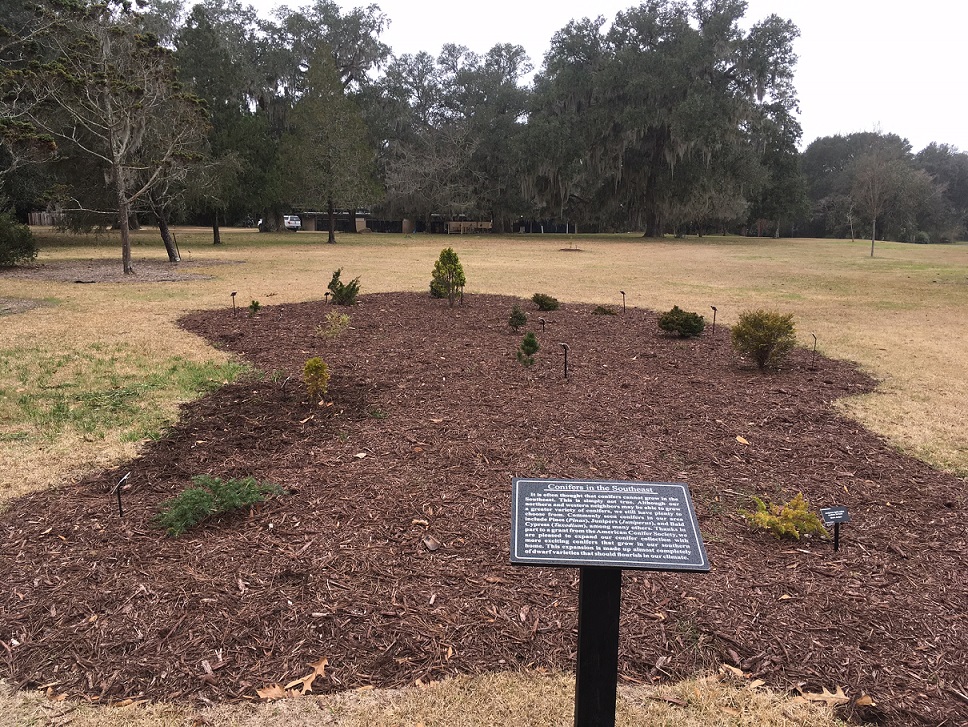
At the end of 2018, Brookgreen Gardens was awarded a grant from the American Conifer Society’s Southeast Region to expand our collection of conifers. With this generous grant, we added a number of conifers, many of them dwarf types, into our arboretum. This project involved the creation of bed space in the existing turf, amending the bed with compost, planting, and mulching. For an extensive look back at our project, please read Brookgreen’s Conifer Expansion.
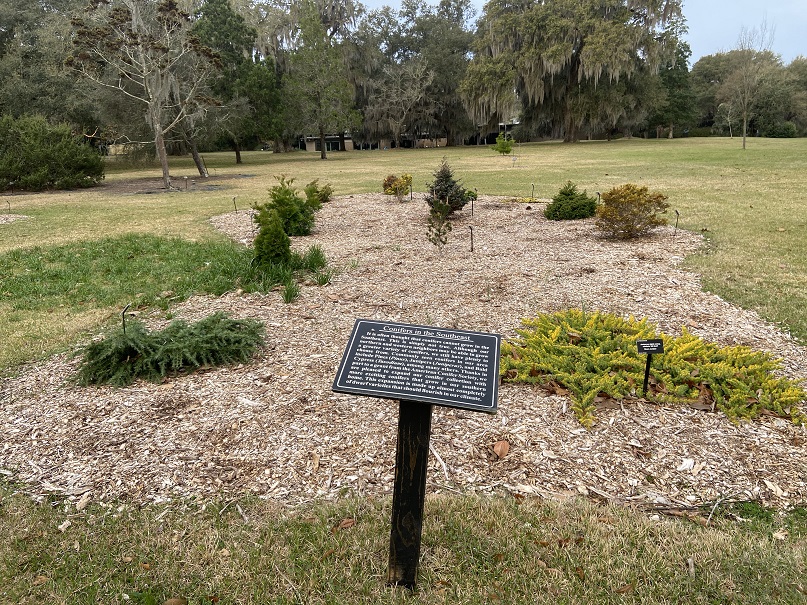
A little over two years later, our conifer expansion is still in great shape, as you can see above! One of the challenges we met when we originally designed this bed was finding conifers that would do well in our hot and humid climate. Fortunately for us, all but one of our original conifers was a good fit for this planting. The only plant that did not survive was a dwarf hiba arborvitae (Thujopsis dolabrata ‘Nana’), which we later replaced with a dwarf Chinese juniper (Juniperus chinensis ‘Echiniformis’), pictured below, that appears to be doing just fine.
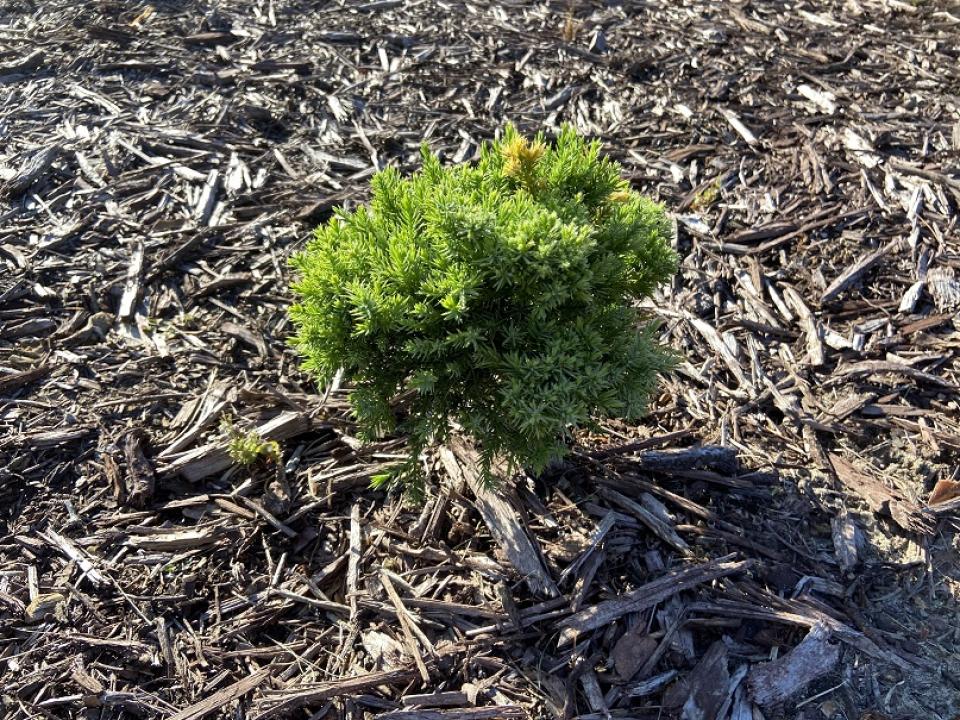
One thing we did not anticipate when we did this project was the presence of spring flowering bulbs. You may have noticed in our current picture that the bed looks a bit weedy on the left hand side, about midway up. Those plants aren’t weeds, but are in fact atamasco lily (Zephyranthes atamasco), pictured below. Fortunately, the atamasco lily and conifers seem to be coexisting without any problems, so we plan to keep them both as they are.
Azalea Cutback
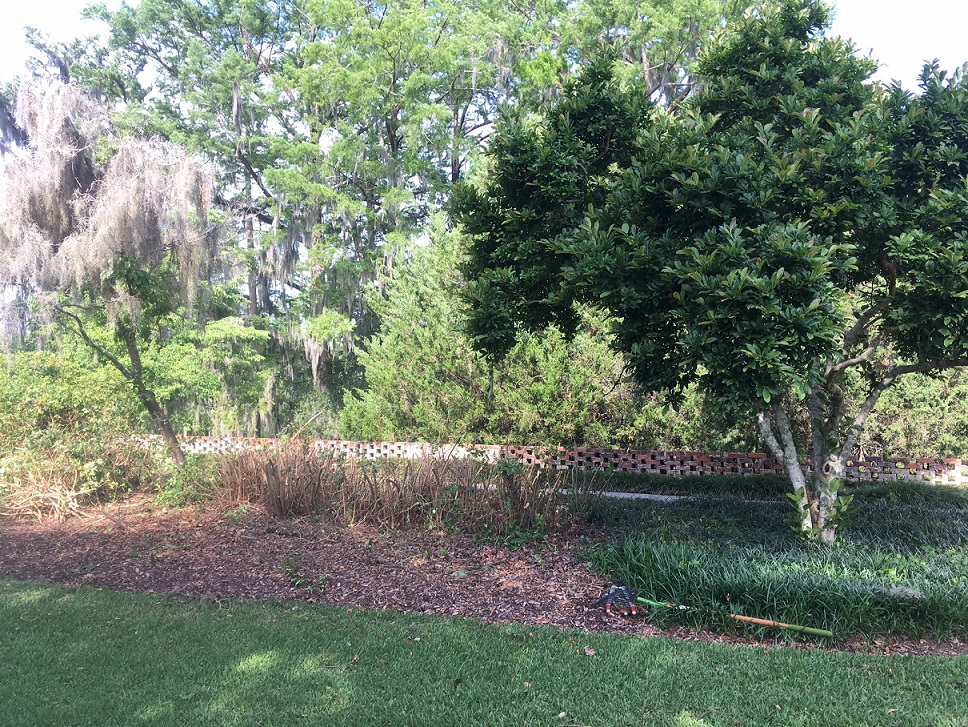
In late Spring 2019, we undertook a project that looked pretty alarming - we did a hard cutback on the azaleas in the Upper Right Wing. Afterwards, the azaleas looked jarring, as seen above, but the task was necessary. Over time, the azaleas had grown quite large and were beginning to outgrow their space. In order to get them back to a more manageable size, they were cut low, as described in The Taming of the Shrub.
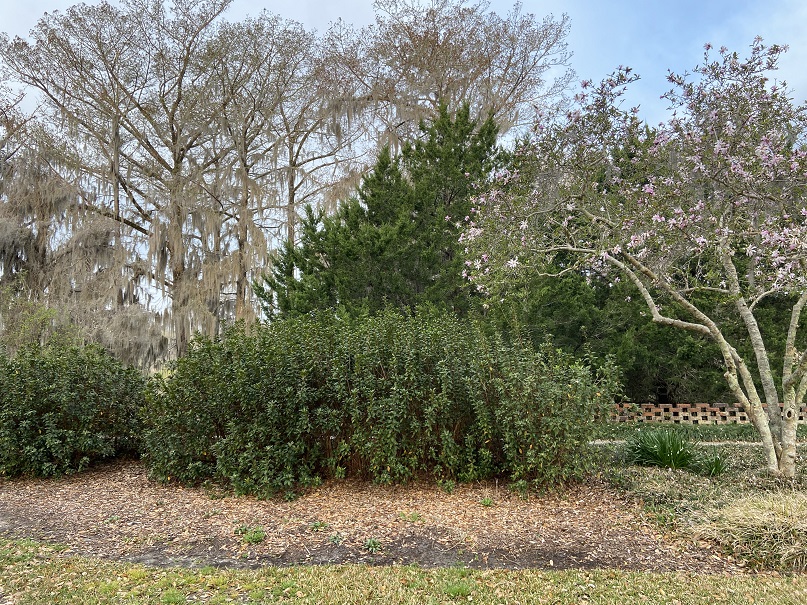
It’s hard to believe how much growth these have put on in a mere two growing seasons, as seen above. While the azaleas have begun to grow tall, the growth is still relatively young and will be easier to maintain. Frank Hosier, Manager of Horticulture, who maintains the Upper Right Wing, has a management plan ready for after these azaleas bloom. Once flowering has stopped, he will cut these back again - but not nearly as hard! The shrubs will be pruned into a mounded shape and will be cut a little lower.
The Monkey-Puzzle Tree
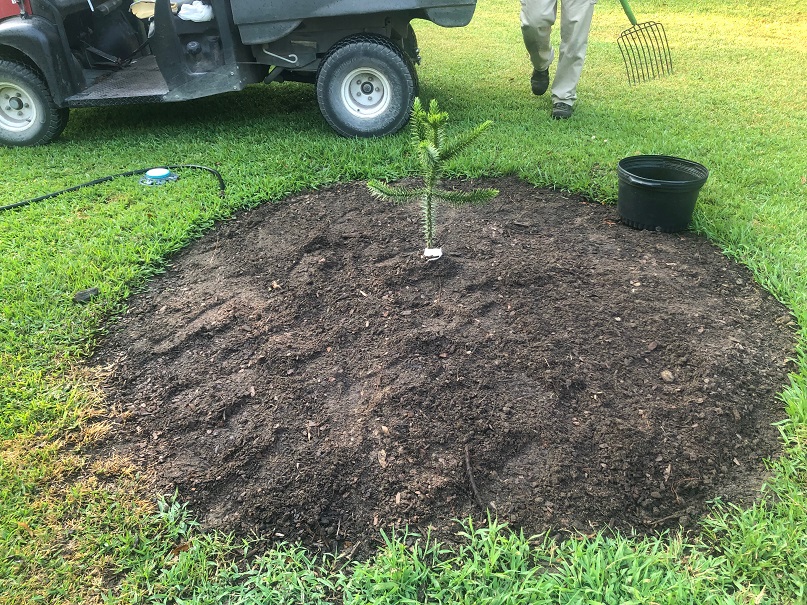
In the summer of 2019, we had the great fortunate of having Madison Proffitt join us as an intern. During her time with us, she not only participated in planting a monkey-puzzle tree (Araucaria araucana), above, but also shared the extensive process of preparing the bed space in her blog, Barrel Full of Monkey Puzzles.
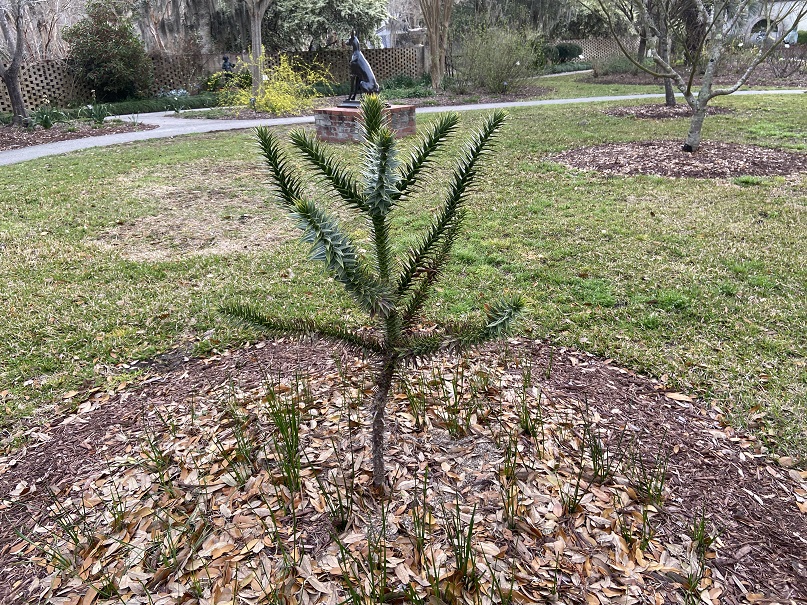
Monkey-puzzle trees can be tricky to keep in good health. They need to be planted in full sun, receive regular water, but also need a very well drained soil. Fortunately for us, the initial work selecting and creating the planting site has proven to be favorable. While this tree is still young and a relatively new plant in the garden, I daresay so far, so good (knock on wood - but not monkey-puzzle wood because that would hurt!). Hopefully I haven’t just jinxed us, but we are delighted to see that this is progressing well within the gardens, as seen above.
The Woolly Pockets
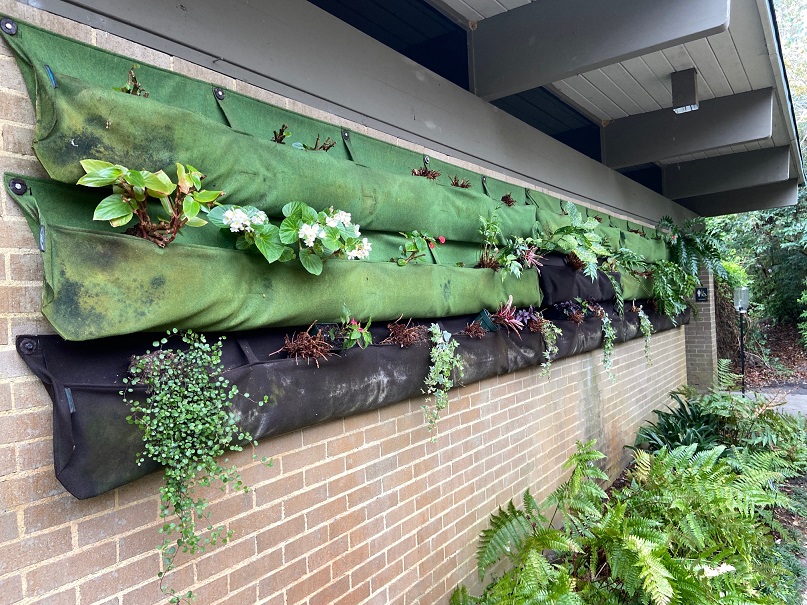
Just about a year ago, I joined Jamie Williams, one of our horticulturists, to watch her revamp her vertical planting outside what is now Harvest Restaurant’s restrooms. The plantings that are displayed in what we lovingly, although incorrectly, call “woolly pockets” (as we found out during the writing of the original blog, they are actually called wally pockets!) are another unique feature at Brookgreen. Last we saw, Jamie was in the midst of adding in new plants to her woolly pockets, as seen above, in order to create a lush design. To learn more about Jamie’s process, please read Woolly Pockets.
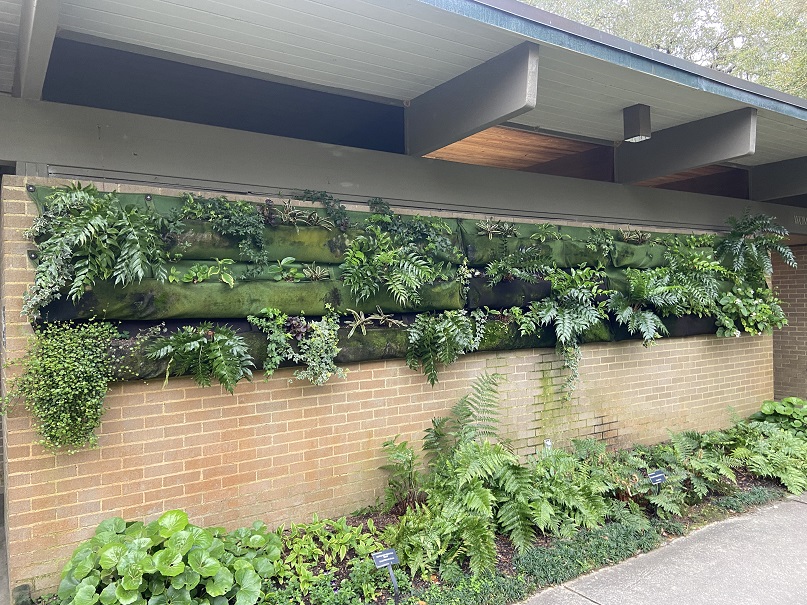
Today, the pockets have filled in nicely and are certainly lush, as pictured above! Ferns and ivy steal the show as they drape down the wall and create an amazing green space on what would otherwise be a bland, brick wall.
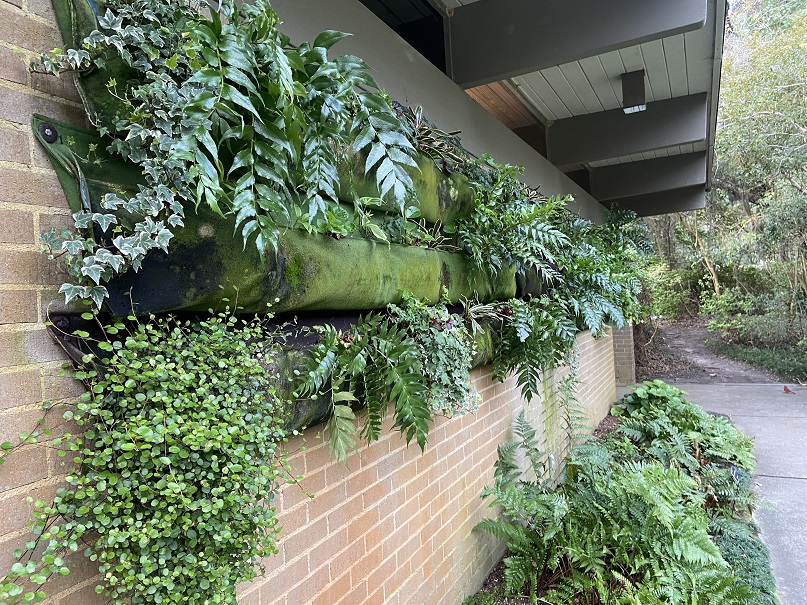
Vertical plantings are definitely an experiment to see what will work in these unique conditions. Jamie, always eager to try new things, recently included a new addition to this space: toad lily (Tricyrtis formosana 'Autumn Glow’), shown below! If it grows anything like it does in the ground, this new addition will add yet another layer of lush depth, while also brightening the space with its golden edged leaves and funky flowers in the fall.
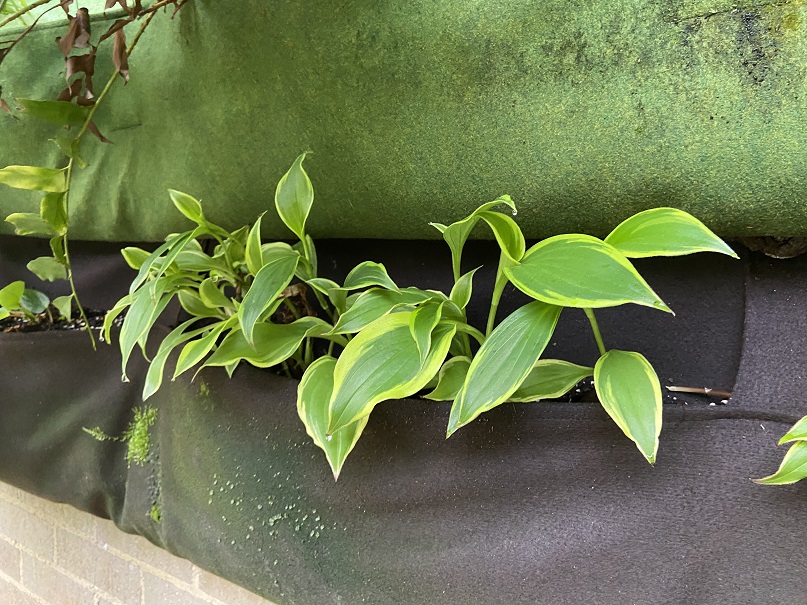
Sacred Lotus Relocation
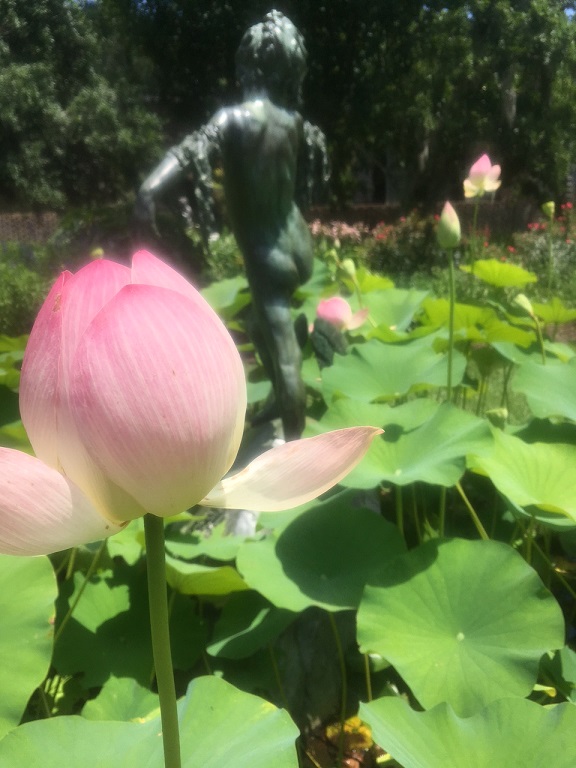
In January of 2019, we undertook the task of relocating a large planting of sacred lotus (Nelumbo nucifera) from Seaweed Fountain in the Upper Right Wing, pictured above, to Man Carving His Own Destiny in the Upper Left Wing, with a few plants being retained by our then newly formed team of aquaculture volunteers. While the lotus were an eye catching display in their original locale, they sadly grew too tall for the space and made it very difficult to see the sculpture that they encircled, necessitating the move. After a lot of dirty work, outlined in Lotus Shuffle, we were excited to see the lotus come up in their new pool.

Since the plants were moved in the winter, we knew we would have to wait until things warmed up for us to enjoy our new planting. So we waited. And waited. And any time any indication of a plant began to come up from the pots placed within the pool of Man Carving His Own Destiny, it was quickly gone within a day or so. As it happened, the pool we moved the sacred lotus to happened to be home to both crawfish and turtles. We learned quickly that they all enjoyed eating the lotus, and therefore it never grew. As you can see below, aquatic plant life in Man Carving His Own Destiny is essentially nonexistent.
Fortunately for us, all of our lotus was not lost, and the small amount saved by our aquaculture volunteers for use in other pools turned out to be a success! In The Visionaries pool, seen below, a small section was planted with lotus, which will be on display once again when the weather begins to get hotter.
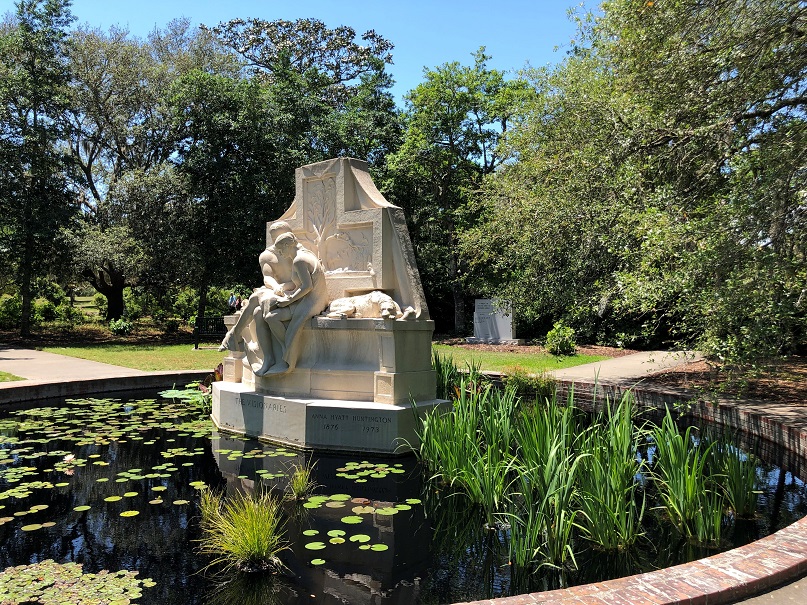
We are always changing at Brookgreen and are excited to undertake new projects, new plantings, and try new things. While we are fortunate that many of our endeavors have been met with success, we also have those that don’t always go quite as planned. Through our successes and failures, we learn and grow. If there’s one thing you can count on at Brookgreen Gardens, it’s that there will be many more new things on the horizon. Just like I said from the start, we truly do live up to our motto and we will continue to be “Ever Changing. Simply Amazing.”
See you in the gardens!
Hours
Hours: Monday & Tuesday 9:30 AM - 5:00 PM
Wednesday - Sunday 4:00 PM - 9:00 PM
For daytime admission, gates close at 4:30 PM. For their safety and the safety of our animal collection, pets are not allowed, nor can they be left in vehicles inside Brookgreen. Service animals that have received special training to assist disabled persons are welcome.
Tickets
Daily General Admission Tickets for 7 consecutive days
Children 3 and under: Free
Children 4-12: $14
Adults 13-64: $25
Seniors 65 & Over: $23
Location
1931 Brookgreen Drive
Murrells Inlet, SC 29576
Off US Highway 17 Bypass, between Murrells Inlet and Pawleys Island on South Carolina's Hammock Coast
843-235-6000
GOOGLE DIRECTIONS